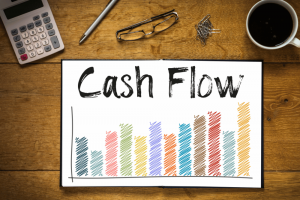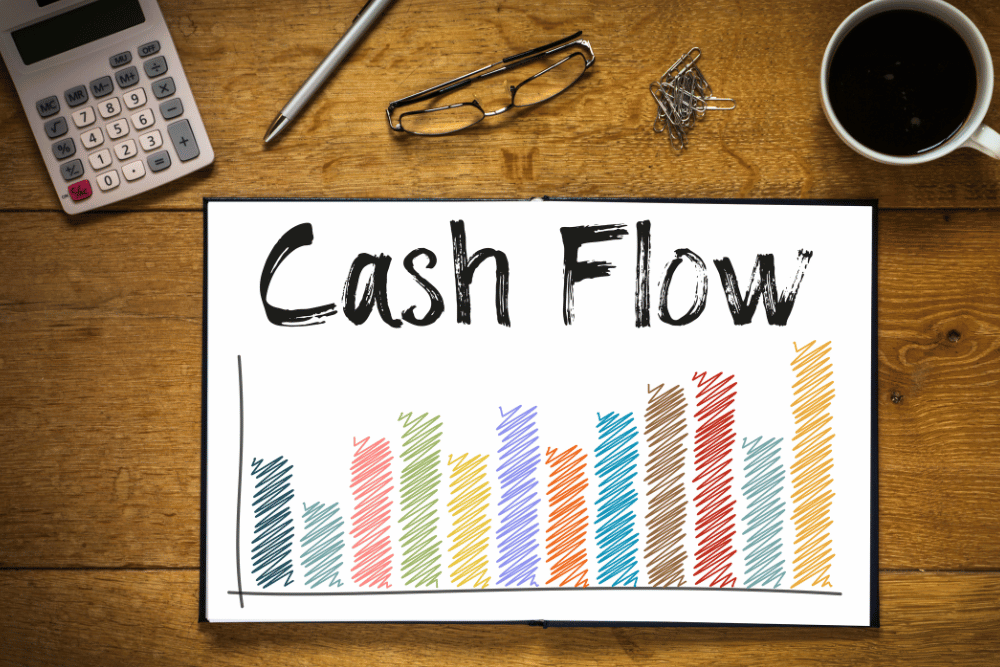
What is Positive Cash Flow? Understanding the Key to Financial Freedom
In the world of real estate, the notion of positive...
Read More
In the world of real estate, the notion of positive cash flow and passive income often sparks enthusiasm among commercial property investors and seasoned professionals. However, for those entering the residential property market, the concept of generating passive income can be confusing. Many people misunderstand the true meaning of positive cash flow, assuming it is simply the result of putting money into a property and receiving a small return. In reality, positive cash flow represents a significant milestone in achieving financial freedom through real estate investments. In this article, we will explore the distinction between residential and commercial properties in terms of generating positive cash flow, debunk misconceptions, and emphasize the importance of sustainable income. By the end, you will gain a clear understanding of the true essence of positive cash flow and its significance in your investment decisions.
Understanding Passive Income
To comprehend the concept of positive cash flow, it is crucial to first grasp the essence of passive income. However, this understanding falls short of the reality. Passive income should not require additional financial support from the investor to sustain the property. Instead, it should serve as a sustainable and tangible income source, capable of contributing towards financial goals or replacing one’s regular income.
The Misconception of Passive Income in Residential Properties
Let’s consider a scenario where you purchase a residential property worth a million dollars, with an initial investment of $200,000. Assuming an 80% loan, you acquire an $800,000 loan, subject to an interest rate. In the current market, interest rates typically range from 5% to 7.5%. For the sake of simplicity, let’s assume a 5% interest rate, resulting in an annual interest payment of $40,000 or $48,000 at a 6% rate.
To cover the mortgage, your property needs to generate $1,000 per week in rental income. However, most residential properties fall short of this figure, even if you manage to achieve $700 or $750 per week, which equates to $35,000 or $40,000 annually. In addition to the rental shortfall, you must account for council rates, insurance, management fees, and other expenses, which could amount to approximately $15,000 annually. Therefore, supporting this property demands $65,000 per year, while your rental income only covers $35,000 to $40,000, leaving a deficit of around $25,000 or $500 per week that comes directly from your pocket.
The Reality of Positive Cash Flow
In the above scenario, the negative cash flow clearly demonstrates the absence of positive cash flow. Switching gears, let’s explore what positive cash flow truly means. Contrary to popular misconception, positive cash flow is not limited to an extra $50 or $100 per week. To qualify as positive cash flow, your investment property should generate substantial monthly income—ranging from $200 to $1000—depending on your financial goals. True positive cash flow provides sustainable and tangible returns that can be utilized towards your desired objectives or as a means to replace your regular income. This stark contrast between commercial and residential real estate is where the notion of passive income diverges.
Commercial Properties vs. Residential Properties
The disparity in understanding passive income arises from the fundamental differences between commercial and residential properties. In the commercial real estate sector, positive cash flow is a common objective for investors. The income generated from commercial properties is typically higher, allowing it to cover mortgage payments, deposits, and all associated expenses, while still leaving surplus funds. This surplus cash flow serves as true passive income, as it can be reinvested, used to finance additional deals, or contribute to personal financial growth.
On the other hand, residential properties often fail to meet the requirements for positive cash flow. While some investors hold the belief that continuous investments and incremental rental increases over time will eventually result in positive cash flow, this approach is flawed. The reality is that such investments tie up a significant portion of your capital with minimal returns, effectively trapping your money in the property and providing little in terms of cash flow.
True Positive Cash Flow: The Key to Financial Freedom
To achieve financial freedom through real estate investments, it is imperative to understand the significance of true positive cash flow. It goes beyond mere breakeven or a small weekly return. True positive cash flow empowers you to cover all financial obligations associated with the property, including mortgage payments, deposits, expenses, and still have surplus income left over.
This surplus income not only provides financial stability but also opens doors to future opportunities. Banks and lenders recognize positive cash flow as a valuable asset, as it strengthens your overall financial position and enhances your capacity to secure financing for future investments. Positive cash flow acts as a catalyst, enabling you to pursue additional deals, refinance existing properties, or leverage equity to expand your real estate portfolio.
The Importance of Sustainable Income
When considering investment options, it is crucial to prioritize sustainable income streams. Positive cash flow offers stability and resilience by ensuring that your investments are self-sustaining, regardless of market fluctuations or economic uncertainties. Sustainable income eliminates the need for continuous injections of personal funds into the property, reducing financial strain and mitigating risks.
By focusing on properties that generate substantial positive cash flow, you create a solid foundation for long-term financial success. This income stream can be utilized to fund future investments, cover personal expenses, or serve as a reliable source of passive income. Sustainable income allows you to achieve a level of financial freedom where your investments work for you, rather than the other way around.
Leveraging Financial Opportunities
One of the significant advantages of positive cash flow is its ability to provide financial leverage. With a proven track record of generating surplus income, you gain access to increased borrowing capacity. Banks and lenders view positive cash flow as a reliable income stream, which bolsters your financial profile and enhances your ability to secure financing for future ventures.
The surplus income from positive cash flow properties can be used to satisfy lending criteria, allowing you to expand your real estate portfolio and pursue more significant investment opportunities. Leveraging financial opportunities becomes easier when you have a reliable income stream that satisfies not only your property-related expenses but also demonstrates your financial capability to lenders.
Making Informed Investment Decisions
Understanding the concept of positive cash flow is crucial when making investment decisions in the real estate industry. By recognizing the true essence of positive cash flow and its significance in achieving financial freedom, you can make informed choices that align with your long-term goals.
Evaluate potential properties based on their cash flow potential rather than relying solely on speculative appreciation. Look for properties that have the capacity to generate sustainable income that exceeds expenses, including mortgage payments, deposits, and other outgoings. A careful analysis of rental market trends, vacancy rates, and potential rental income can help you identify properties with the potential for positive cash flow.
Additionally, it’s essential to consider the impact of loan interest rates on cash flow. Fluctuations in interest rates can significantly affect the financial viability of an investment property. Higher interest rates increase mortgage expenses, potentially eroding cash flow. Keeping a close eye on market interest rates and exploring financing options with lower rates can help optimize cash flow and enhance overall investment returns.
While achieving positive cash flow may present challenges in the residential property market, it’s important not to overlook the opportunities available in the commercial real estate sector.
Positive cash flow goes beyond a small weekly return or breakeven point. It represents sustainable and tangible income that surpasses all property-related expenses, providing financial stability and the potential for true passive income. By understanding the distinction between commercial and residential properties, leveraging sustainable income streams, and making informed investment decisions, you can unlock the benefits of positive cash flow and pave the way towards financial freedom through real estate.
Watch Helen Tarrant’s YouTube Video on this topic: https://www.youtube.com/watch?v=sw9opNJ2jgA
With more than 20 Commercial properties of her own, educating hundreds of students and working with many clients all over Australia, she happily shares her insights, strategies, and valuable experience with you on buying the best commercial investment property for your needs. Subscribe now for more informative videos on commercial property investment, market trends, and strategic planning to stay ahead in the real estate game!
Join one of our upcoming events. Book a strategy session. Buy Helen’s book and watch her YouTube videos. Let us help you learn and grow in commercial real estate investing.
Click the link below to book a Personalised Commercial Property Strategy Call https://calendly.com/blueprint-team-with-helen
FAQs
Positive cash flow refers to the surplus income generated by an investment property after deducting all expenses, including mortgage payments and other outgoings. Passive income, on the other hand, encompasses sustainable and tangible income streams that can be used to achieve financial goals or replace regular income.
While it is challenging for residential properties to generate positive cash flow, it is not impossible. Careful selection of properties, thorough market analysis, and optimizing rental income can help increase the chances of achieving positive cash flow.
Positive cash flow provides a sustainable income stream that covers all property-related expenses and leaves surplus funds. This surplus income can be reinvested, used to finance additional deals, or contribute towards personal financial goals, ultimately leading to financial freedom.
Sustainable income ensures that your investments are self-sustaining, reducing the need for continuous injections of personal funds into the property. It provides stability, mitigates risks, and allows you to leverage financial opportunities by demonstrating a reliable income stream to lenders.
Commercial properties often offer higher rental incomes and greater potential for positive cash flow compared to residential properties. Exploring a mix of residential and commercial properties can help diversify your portfolio and increase the likelihood of achieving positive cash flow.
In the world of real estate, the notion of positive...
Read MoreVideo marketing offers numerous benefits that help businesses thrive in...
Read MoreUnikorn Commercial is about serving your needs in your Commercial...
Read MoreBy Helen Tarrant Current investors are no doubt looking at...
Read MoreThe professional team at Unikorn are ready to help you through the minefield of finding, selecting, negotiating, settling and managing your commercial property investment.
Book your FREE Strategy Session now.

